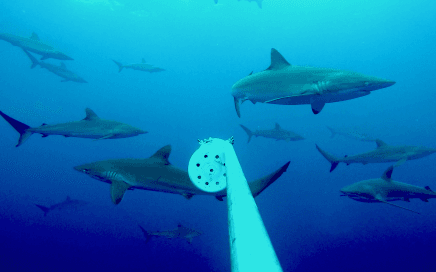
The Poisonous Granular Frog
AUTHOR: Josue Alberto Vargas Montoya (14 years of age)
The spectacular family of poisonous frogs (Dendrobatidae) surprises with its beautiful and colorful and lethal frogs. In Costa Rica, we have eight species of poisonous frogs. Those of the genus "Silverstoneia" and "Allobates" are not harmful.
The genus "Oophaga" is famous for its "pants," and the only two species of Oophaga of Costa Rica (O. Pumilio and O. Granulifera) are those that present pants.
The Granular Poisonous Frog (Oophaga Granulifera) is endemic to the Central Pacific and southern Costa Rica and part of Panama. It can be located near gorges in the woods.
In Costa Ballena, you can find the Red morpho with its green pants and his back "Granular," hence its name.
no images were found
After Hacienda Barú towards the Central Pacific, its main red color changes to Orange for the Matapalo sector, yellow in Portalón, and finally an olive green in San Rafael, Quepos always with its green and sometimes light blue pants.
These frogs are in danger due to the loss of their habitat. It is also exploited by smugglers to sell them as Terrarium pets.
Its venom is neurotoxic and very dangerous. It is not recommended to manipulate animals in freedom, especially the beautiful multicolored frogs.
The dangerous thing would be for the poison to reach a wound, or you would suck it.
Indigenous peoples used the poison of these frogs for hunting, smearing the poison on their arrows. That is why some of them are called "arrowhead frogs or dart frogs" in general (phyllobates).
Granular poisonous frogs are well distributed in Costa Ballena. It is a great attraction for tourists and so of interest for tour guides. Costa Ballena is one of the main places to see the Red Morpho, one of the granular venomous frogs.
They are diurnal, and males are heard singing to attract females to reproduce. The female lays her eggs in leaf ponds in the forest. As the hours pass, the eggs become tadpoles waiting for their father to place them in a bromeliad where they will be safe.
The mother feeds them with infertile eggs until they grow and can find food on their own.

The surprising benefits of Piper Umbellatum
Before pulling it out as an ordinary weed, I took a photo with an app called PlantNet. And in a second, I had its name; Google told me the rest. I am impressed by the surprising benefits of Piper Umbellatum. It is a plant growing in tropical áreas, and you can find it along our rural streets and in your garden. It can flower all year round if there is sufficient moisture.

Basilisk
Most probably, you have seen a creature crossing a stream with high speed on his hind legs. This runner is a basilisk, also called Jesus Christ lizard. Basilisks can do this because of their large feet and specialized flattened toe fringes. These fold out when the foot presses down on the water surface.

The Secret Life of the Sharks
After four years of research, the first results of the project The Secret Life of Sharks of Costa Rica are published in the Scientific Reports journal of Nature Research, a journal with a high impact worldwide.

The Slow Cooker – Making Life Easier
Enter the idea of food prep and a slow cooker. This contraption is a game-changer in my life. Instead of just throwing together a peanut butter and jelly sandwich and a banana and calling it lunch, I am eating heartier, more satisfying meals now. I am spending so much less time at the stove and cleaning up after. I make large portions at a time and freeze whatever I don’t eat.

THE DIQUIS STONE SPHERES
The stone spheres are a representative sculptural element of the chiefdom societies of the Diquís delta. These artifacts were used as symbolic, ritual, socio-political objects, and possibly as chronological, status, and power markers. Its manufacture constituted an extended tradition, approximately between 300-400 BC. until 1500 A.D. During this period, its production and use reached its maximum development.

Why You Should Not Surf Alone – Part 2
Since I have surfed the spot for twenty years, I felt safe enough to drop in and make an exit before it got too shallow. What I did not anticipate was how much the tide would drop in that one hour.
What to do, Where to eat and Where to stay…
- Activities and Tours
- Whale Watching Tour
- Natural Attractions
- Marino Ballena National Park
- Restaurants
- Hotels and Accommodations
Looking for business directories, maps or other printouts? We’ve got that too!
- Tide Charts
- Bus Schedules
- Dominical Business Directory
- Uvita Business Directory
- Costa Ballena Map
- Dominical map
- Uvita map
- Ojochal map
South Pacific Costa Rica Beaches
Dare to Discover and Enjoy…
Check out…
Need help planning your next trip? Let us help you with your Costa Rica vacations!
Email: carlos@ballenatales.com
Phone: +(506) 8946 7134 or +(506) 8914 1568
